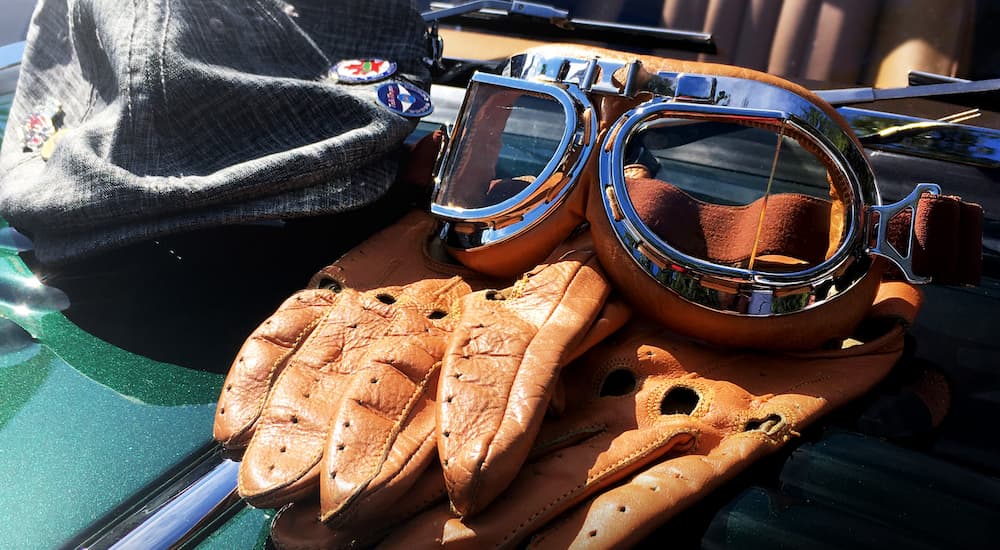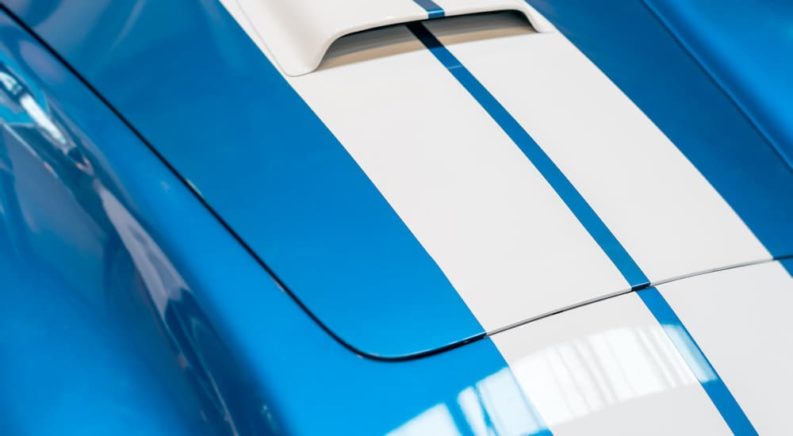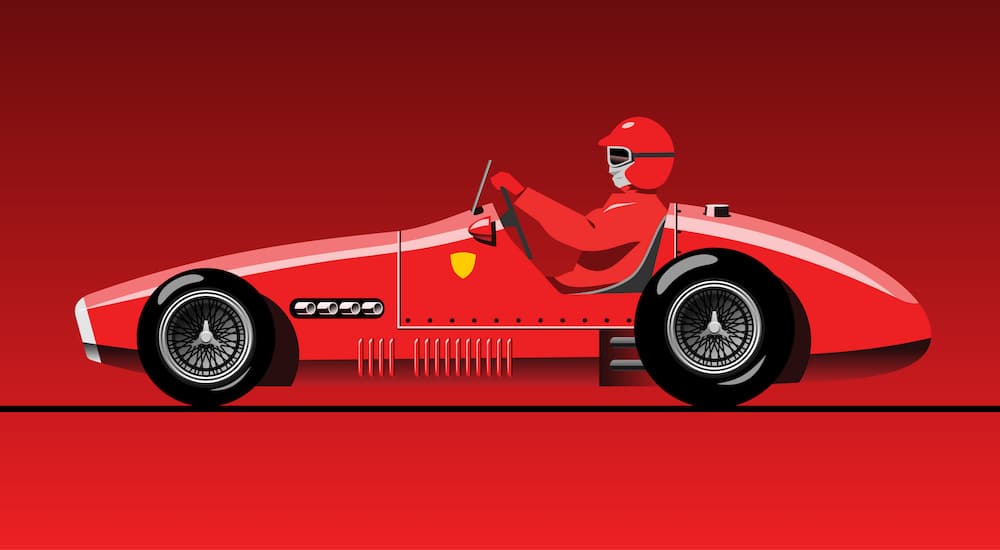Have you ever wondered why they call it “British Racing Green?” Thought about why Ferrari and the color red are inseparable? Or stopped to question why a disproportionate number of American muscle cars are blue with white racing stripes? It turns out that all of these questions have the same answer. In the early days of motorsports, when the competition was still driven more by national pride than corporate advertising budgets, race cars were painted in official national colors rather than plastered with paid-for stickers from a dozen different companies. If you are looking for some historical inspiration for decorating your next car or simply want some motorsports trivia to impress your friends, the story of national racing is filled with some interesting twists and turns.

It All Started in France
National racing colors have been a part of motorsports almost since the introduction of the automobile. In fact, they first made their appearance in the 1900 Gordon Bennett Cup–a Paris to Lyon road race that included teams from France (obviously), Belgium, and the United States. Only two cars (out of five that started) finished the race, both wearing the solid blue of the French teams. Now known as Bleu de France, this remained the national racing color of the nation up until national racing colors lost popularity in the second half of the 20th century.
The lone Belgian car was painted in yellow after the black-yellow-red of the Belgian flag (most of the original colors were inspired by national flags). Despite its failure to finish after sustaining damage from hitting several dogs along the route, yellow became the official racing color of the small nation. The American car was also forced to retire early (from losing a wheel, not hitting dogs), but its bright red paint did not go down in history with the French blue and Belgian yellow. There was also a German car that entered the race but did not start. It was painted pure white (the German flag of the era was horizontal stripes of black-white-red), which has become one of the two national colors that remain associated with German racing.
The British are Coming
In the 1902 Gordon Bennett Cup, the British took home the gold, and the rules stated that the winner would host the next race. However, auto racing was outlawed in England at the time, so the race was held in Ireland instead. The British were already unable to race under any of the colors of their national flag (France had blue, America had red, and Germany had white), so for the 1903 race, they decided to paint their cars green in honor of the Emerald Island where they would be racing. Somehow, the color green stuck, becoming the now-iconic British Racing Green. The original color was actually bright green, but it matured over the years to the almost black shade that is still used by Lotus and Aston Martin in major international races.
The Silver Arrows of Germany
Over the years, Germany has been tied to two different national racing colors: the original white from the 1900 race and also the more popular silver. There is a popular story that Mercedes introduced silver to international racing in the 1930s when they realized that one of their F1 cars was overweight and scrubbed off the white paint to squeak beneath the weight limit, racing in the bare aluminum chassis. The truth is slightly less dramatic, but at the same time, more interesting. In medieval heraldry, white and silver are used interchangeably, and Mercedes took advantage of that rule to give its cars some added flair. Over the years, silver has become the more widely recognized national color for Germany, with white becoming more closely associated with other countries.
What’s More Italian Than a Red Sports Car?
Originally, America was assigned the color red, so how did Ferrari end up with its trademark hue? As the story goes, Italy claimed red as its national color after an incredible 1907 cross-country race from Beijing to Paris. Five teams entered this race, including an Italian team headed by Prince Scipione Borghese. Because this was not an official race, there were few rules, and Prince Borghese decided to paint his car bright red. It took him two months to cover the 9,317-mile route, winning a case of Mumm champagne and stealing the color red for the Italian racing team. Whether the story is true or not, Italian national teams began using Rosso Corsa as their official color in the 1920s, and as the most successful Italian race car builder, the color red became Ferrari’s calling card.
Not Red, But White and Blue
America was something of an outlier in international racing. Despite participating in the original Gordon Bennett Cup, American teams were never a major part of the European racing scene where national colors played an important role. After Italy claimed red for itself, America was left without a national color. When American teams again started participating in international races in the 1920s, they were assigned white with blue stripes. When Briggs Cunningham decided to challenge the 24 Hours of Le Mans in 1950, he painted his cars with two parallel blue stripes down their length, creating a popular interpretation of the color scheme that later found its way onto the 1965 Mustang GT350 as a factory option.
Around the same time that Ford began painting “Le Mans Stripes” on its sports cars, Shelby America adopted a version of the paint scheme with the colors reversed for its racing team. First appearing on Shelby Cobras in 1964, the deep blue with white stripes made the jump to the legendary Ford GT40 when it first appeared at Daytona in 1965. While not the official American national color scheme, the white on blue was used by many American racing teams and has become just as popular as blue on white with modern car enthusiasts.
The Demise of National Colors
As more and more nations entered international races, the number of official colors exploded. In order to make sure that every nation had a unique livery, the rulebooks resorted to a bewildering combination of colors, stripes, circles, and more. Hungary, for instance, was given red, green, and white stripes, while Lithuania raced in a dazzling yellow and green checkerboard pattern. Some of the patterns became difficult to distinguish as well, such as how Portugal and Switzerland were both assigned slightly different combinations of red and white stripes. However, the end finally came in 1968 when Formula One allowed sponsorship liveries for the first time.
Rather than being marked by national colors, teams now painted their cars in colors representing their major corporate sponsors. However, this surrender to capitalism produced just as many iconic liveries as the older national colors, and many of them lived on long after the corporate sponsorship that inspired them ended. For instance, Subaru’s rally team has become permanently tied to the blue and gold colors of the State Express 555 cigarette company that sponsored them from 1993-2003, and the Ford GT40 is best known for its pale blue and orange Gulf Oil paint scheme.
Today, national colors are no longer an official part of high-level international racing, but many teams continue to pay homage to the colors their nation used to race under. Even more common are the legions of enthusiasts who paint their personal cars in liveries made famous by race cars of the past. Whether they own a classic car that may have actually raced in those colors in its heyday or just want to keep a bit of tradition alive on a modern vehicle, national colors remain a great way to make a car stand out and make the driver feel a little more connected to the motorsports icons of the past.





